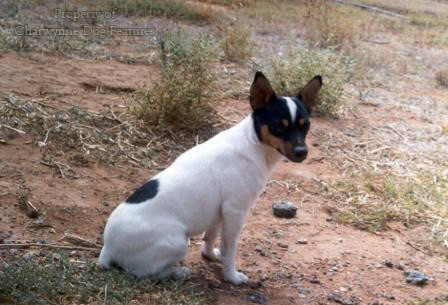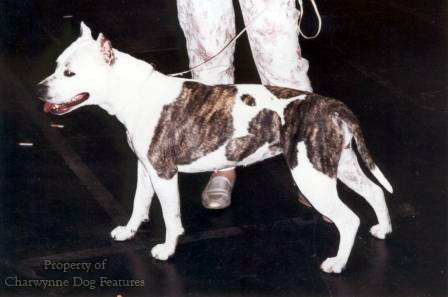778 TERRIERS AT LARGE
TERRIERS AT LARGE
by David Hancock

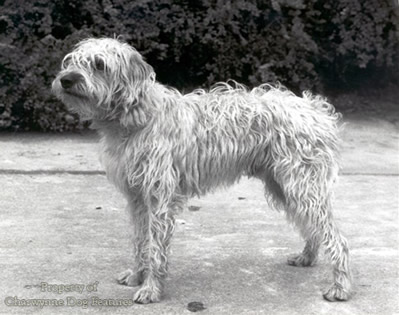
“A show of ratting terriers was held in the Palais de l’Industrie at Antwerp in July, and is worthy of record as being the first show held in Belgium by a specialist club. The entry of 156 included 16 dachshunds, 13 Schipperkes, 40 fox terriers, 2 Skyes, 6 bull terriers, 3 Yorkshire terriers, and several toy griffons, with a few white English terriers and black and tans, in addition to a nondescript variety class…on the second and third days the visitors were treated to grand ratting contests, which are very popular in Belgium. There were no English exhibitors present…” (from a notice in The Kennel Gazette of August 1888) – no ratting terriers from Britain! Who blundered? 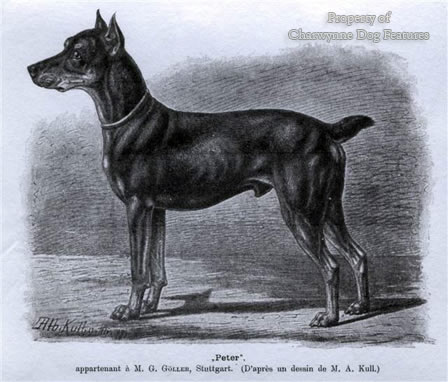
Most of the terrier breeds are quintessentially British. But nowadays we can read of Rat Terriers as a breed in America, the Brazilian Terrier and the well-established Australian Terrier, as well as the misnamed Tibetan Terrier. French and German writers of previous centuries have made reference to dogs functioning as terriers, not just Dachshund types but Pinschers and Schnauzers too. We may have captured the terrier breed market but not the terrier function. The Dutch have re-created their Smoushond, with a distinct terrier appearance. The German Hunt Terrier has fanciers here; the newly-created Cesky Terrier is finding favour here too. The Boston Terrier is not an earth-dog although it does have a bull terrier ingredient in its ancestry.
The Dobermann Pinscher and the Giant Schnauzer are, like the Airedale and the Russian Black Terrier, not exactly earth-dogs but the smaller pinschers and schnauzers were farm and stable vermin controllers, just like our native terriers. The smooth-haired Austrian Pinscher has many similarities with our emergent Plummer Terriers. The Franks had a small dog they called the bibarhund or biberhunt, literally beaver-dog. From these came a type referred to as rattlers, both smooth and rough haired. Later came the Rattinpintscher, literally a dog that nips rats, and in time the breed-type we know as the pinscher and schnauzer, literally a dog with a bearded muzzle, developed.
In France, the Societe Centrale Canine and the Reunion des Amateurs de Fox Terriers have instituted the Coupe de France de Broussaillage - flushing game above ground. Smooth Fox Terriers there are recognized not just below ground, but for their aptitude for hunting above ground, flushing out wild pig from thick undergrowth and their persistence and boldness in the drive. German Hunt Terriers, Jack Russells and Welsh Terriers are used, as well as the Fox. Points are awarded for performance during the search (15), flushing and voice (20), drive and pursuit (10) and reaction to gunfire (5). Judges can multiply the scores according to the dog’s overall showing, so that a total of say 40 could be increased by doubling or even tripling the score to 80 or 120. Grades are awarded for 125-150 points (excellent), 100-125 (tres bon) and 75-100 (bon), with 50-75 earning an honourable mention. How good it would be if such terrier working tests were to be introduced here, if only to reveal the braggers!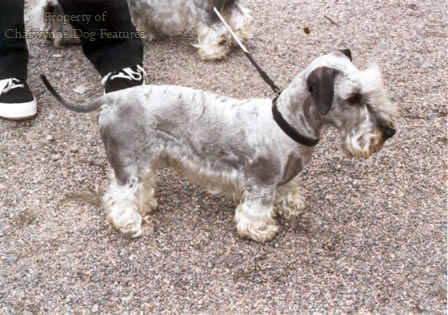
The past popularity of the Fox Terrier has led to derivatives appearing even further afield. In America both the Rat Terrier and the Toy Fox Terrier, both recognized breeds, have been developed, as further afield have the Brazilian and Japanese Terriers; the Toy Fox Terrier is not a smaller Fox Terrier but a newly-created breed, with Chihuahua and Manchester Terrier blood behind it. In Andalusian Spain the sherry houses and wine shops use another Fox Terrier derivative, the Ratonero Bodeguero, to keep rats under control in their store rooms. In Australia, the Tenterfield Terrier has appeared, with a distinct small Fox Terrier look to it. The Rat Terrier, developed it is said from crosses of Smooth Fox Terrier and the Manchester Terrier, comes in three sizes: 14-23 inches, under 14 but over 10 inches and up to eight inches in the miniature form. The larger sizes were once used in rat-baiting contests, but are famous for achieving huge totals of rats killed on farms, with the record set at around 2,500 rats killed in an infested barn over a seven hour period. They are used by American hunters on squirrel, coon, possum and ground game, as well as in tracking wild boar and deer. Beagle blood has increased size, scenting and hunting skills; Whippet blood has provided the source for the blue and brindle colours. The 10 inch high Toy Fox Terrier is still used as a rat killer, having lost little of its tenacity in its reduced form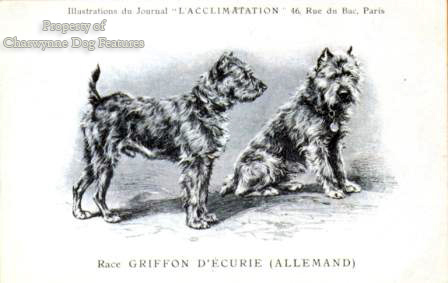 .
.
The Japanese Terrier, 12-13 inches high, is also called the Nippon Terrier, Mikado Terrier and Oyuki or snowy terrier, but is essentially a companion dog. The Brazilian Terrier, also called the Fox Paulistina, is used to control vermin on ranches and estates, is rooted in imported Fox Terrier blood, being around 15-20 lbs weight and in their native country come second to the Filas in numbers of registrations. The Tenterfield Terrier in Australia, around a foot high, can be confused with a Jack Russell, but the head is narrower and finer, and the bone heavier and the build stockier. It is not known outside Australia.
Well known outside Australia however is the national terrier, the Australian by name.
With over 50 registrations each year here, this terrier breed, developed in Australia and originating in Tasmania around 1800, where little vermin destroyers weighing aro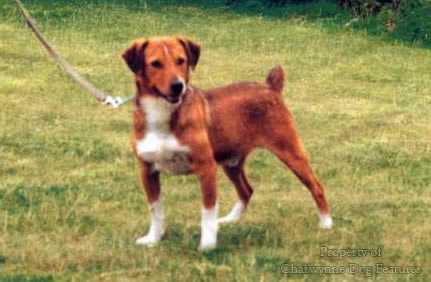 und 10lbs and bearing striking blue sheen coats, with tan under markings, became valued. Once known as the broken-coated blue and tan terrier, it is said to have Skye Terrier blood for colour of coat, length of body and shortness of legs, Scottish Terrier blood for harshness of coat and Dandie Dinmont blood for the topknot. There are claims too of Yorkshire terrier blood and the introduction of Irish Terrier blood to stabilise the red colour. It could be that the major input came from the old black and tan rough-coated common terrier of England, taken to Australia by settlers. At 10 inches high and around 14lbs weight, I am impressed by those I see at shows, but I am not aware of their working use by any reputable terrier-men, which is a pity. In his Australian Barkers and Biters of 1914, Robert Kaleski writes these words on the terrier need there: “There is generally in the Australian bush a need for a small vermin-dog – to kill rats, rabbits, foxes, bandicoots, etc…The best dog for this is, of course, a small smooth-haired Terrier; and the best of the smooth-haired Terriers is the ‘Foxie’.” It is such a pity that the blood and performance of our Fox Terrier is rated more in Australia, Japan, Brazil, North America and Southern Spain than here.
und 10lbs and bearing striking blue sheen coats, with tan under markings, became valued. Once known as the broken-coated blue and tan terrier, it is said to have Skye Terrier blood for colour of coat, length of body and shortness of legs, Scottish Terrier blood for harshness of coat and Dandie Dinmont blood for the topknot. There are claims too of Yorkshire terrier blood and the introduction of Irish Terrier blood to stabilise the red colour. It could be that the major input came from the old black and tan rough-coated common terrier of England, taken to Australia by settlers. At 10 inches high and around 14lbs weight, I am impressed by those I see at shows, but I am not aware of their working use by any reputable terrier-men, which is a pity. In his Australian Barkers and Biters of 1914, Robert Kaleski writes these words on the terrier need there: “There is generally in the Australian bush a need for a small vermin-dog – to kill rats, rabbits, foxes, bandicoots, etc…The best dog for this is, of course, a small smooth-haired Terrier; and the best of the smooth-haired Terriers is the ‘Foxie’.” It is such a pity that the blood and performance of our Fox Terrier is rated more in Australia, Japan, Brazil, North America and Southern Spain than here.

